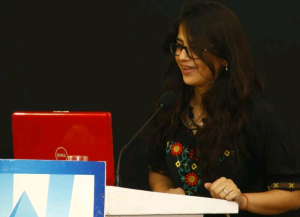 Most e-commerce companies in India are currently focused on driving up valuations by increasing market share at the cost of profitability. Can the Indian e-commerce bubble burst? It can be looked at two ways where one argument says – The bubble has already burst at the valuations level. In 2012, the total e-commerce revenue in India is at about $1.6 bn. In India, online retailing accounts for only 0.3 percent of all retail volume, compared with 5 percent in the US and 1.8 percent in China. The online retailing in India is set to explode. The market will expand at a CAGR of 25 percent over the next five years to reach $8.8 bn by 2016. While the other section of players argued – Currently, the number of e-commerce companies in India with a substantial turnover is only a handful. In Indian e-commerce, we don’t see the bubble really. The bubble of late 1990s was due to the business model of the anticipation of a transaction” or “eye-balls,” but it doesn’t apply to the current scenario where the customers are increasingly transacting on the net. Indian e-commerce is showing lot of promise.
Most e-commerce companies in India are currently focused on driving up valuations by increasing market share at the cost of profitability. Can the Indian e-commerce bubble burst? It can be looked at two ways where one argument says – The bubble has already burst at the valuations level. In 2012, the total e-commerce revenue in India is at about $1.6 bn. In India, online retailing accounts for only 0.3 percent of all retail volume, compared with 5 percent in the US and 1.8 percent in China. The online retailing in India is set to explode. The market will expand at a CAGR of 25 percent over the next five years to reach $8.8 bn by 2016. While the other section of players argued – Currently, the number of e-commerce companies in India with a substantial turnover is only a handful. In Indian e-commerce, we don’t see the bubble really. The bubble of late 1990s was due to the business model of the anticipation of a transaction” or “eye-balls,” but it doesn’t apply to the current scenario where the customers are increasingly transacting on the net. Indian e-commerce is showing lot of promise.
The Flourishing Product & Services in Indian e-commerce In most economies. e-commerce growth has typically been led first by content (i.e.. books and movies), consumer electronics (i.e., laptops and accessories) and services (i.e., travel, job site). As consumers get comfortable with transacting online, growth in other categories such as food, clothing, cosmetics and other general merchandise categories follows. This model of growth has played out in the US and is now unfolding in China.
In the Indian Context, the story is a bit different – E-commerce can be categorized into three categories. The first comprises banking, insurance and financial services. The second comprises online service and offline delivery of items, which include technology, entertainment and travel. The third offers physical delivery of products. Physical delivery of products like apparel & lifestyle products, handicrafts, furniture, and accessories holds the biggest promise and the biggest challenge too in India.
The Biggest Challenge for e-Commerce in India One of the greatest difficulties is to scale up businesses enough to achieve a critical mass. Even on a global basis, e-commerce has had few winners in each vertical. Another challenge is the  payment issues and most of the consumers end up using cash-on-delivery. But for the e-commerce firms, this option is not the best one. Supply chain, vendor management and cyber crime are other challenges being faced by e-commerce players. Another problem that e-commerce companies face is managing manpower and supply chain.
payment issues and most of the consumers end up using cash-on-delivery. But for the e-commerce firms, this option is not the best one. Supply chain, vendor management and cyber crime are other challenges being faced by e-commerce players. Another problem that e-commerce companies face is managing manpower and supply chain.
Can Government of India Lend a Helping Hand ? Indian Entrepreneurs are weary about Government and expect nothing from it as it is mostly filled with self interested Law Makers and Bureaucrats. However, increasing the broadband access, penetration of smartphones and similar devices in India could give a boost to the e-commerce industry. The other important factor in the development of India’s e-commerce market is the rapid maturation of the eco-system of enabling services, particularly logistics and payments infrastructures [RBI].
What does it take an Entrepreneur to Win ? Be tough and passionate in what you do. You need to focus on fundamentals and trust the market, be innovative, recruit the great talents, have a strong board of directors. Your success will depend on your talent and your momentum to make the right choice at the right time. That will cost you lots of sacrifices but the ride would be definitely worth it. Three key areas that an e-commerce venture needs to focus on are a unique value proposition, concentration on single transaction economics, and scalability.
Remember that e-commerce is an ultimate test of matching technology with marketing innovations, merchandise management, supply supply-chain, financial prudence and the best HR practices will decide the Winners of Tomorrow.